Monster cropping: How to monster crop cannabis plants
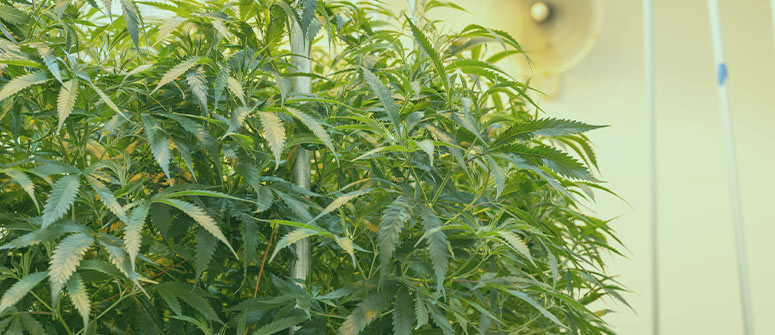
Monster cropping is a cannabis training technique in which clones are taken from flowering plants and re-vegged, creating bushy growth, larger yields, and even a potential increase in THC. Read on to learn how to monster crop your cannabis plants and reap the rewards of this unique high-stress training technique.
Contents:
Monster cropping is a cannabis training technique that involves taking clones from a plant during its flowering stage, which are then re-vegged to create bushy plants that produce hefty yields. Keep reading to learn more about monster cropping and how it works.
What is monster cropping?
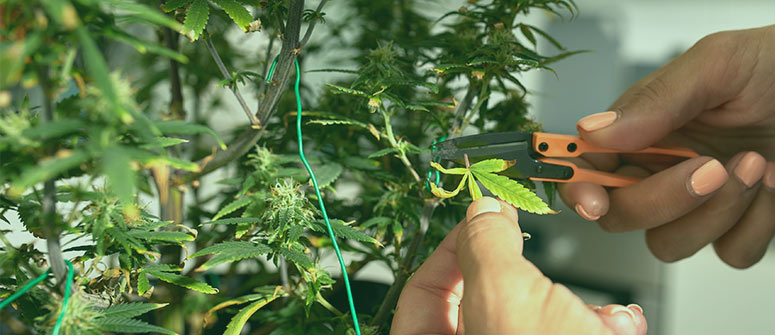
Monster cropping aims to capitalise on the bushy growth seen in flowering plants that have reverted back to their vegetative phase. Essentially, monster cropping involves taking cuttings from a flowering cannabis plant. Once they take root, the cuttings are reverted back to veg to encourage exceptionally bushy growth and the formation of many side branches and flowering tips.
Main effect of monster cropping on cannabis
Reverting from bloom back to veg is a stressful and unnatural experience for cannabis plants. Nonetheless, if you've ever successfully re-vegetated a female plant, you may have been surprised by her newfound foliage, branches, and bud sites. As such, growers capitalise on the vigour of a mature plant, rather than having to grow sensitive seedlings that take time to develop roots and start growing properly.
At the same time, growers are able to clone plants that they're already growing, rather than having to grow new plants with different genetics.
Purposefully stressing your cannabis plants might sound counterintuitive. However, stress is at the heart of all cannabis training techniques, and when applied to the right degree, can push your cannabis plants to grow more rapidly, resulting in larger harvests of more potent buds. Monster cropping, in particular, is believed to encourage greater resin production, which could increase the THC levels of your bud.
What are the pros and cons of monster cropping cannabis?
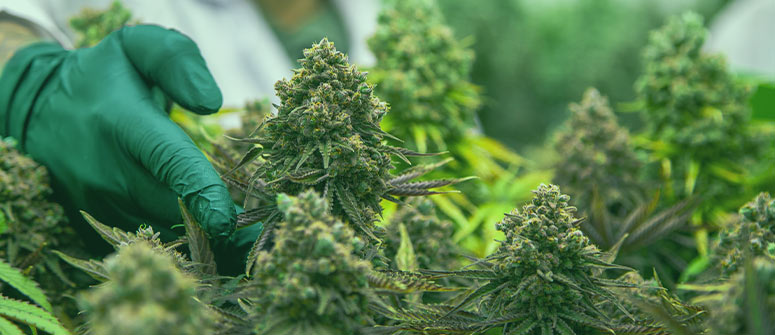
There's a reason (actually, multiple reasons) why so many growers advocate for monster cropping. When done properly, monster cropping can hold a number of benefits. However, that doesn't mean it's for everyone, or that it’s guaranteed to produce good results. Consider both the pros and cons of monster cropping below to decide whether it's the right training technique for you.
Pros of monster cropping
Let’s start with the pros. Below are some of the main benefits of monster cropping.
Continuous harvests, without a mother plant
Growers who want to enjoy continuous harvests typically keep a mother plant from which to take clones. While this is a great technique, keeping a mother plant is labour-intensive and typically requires two separate grow spaces—one for the vegging mother, and another for its flowering clones. Hence, this generally isn't for rookie growers or those working with limited space. Monster cropping solves this by allowing you to enjoy a staggered harvest by taking clones from a mature flowering plant, rather than keeping and caring for a vegging mother.
Better yields
The success of any cannabis training technique depends on a grower's skills, the health of their plants, and the genetic strength of the strains they grow. When performed properly and on the right plants, growers claim monster cropping can increase yields by 10–20%.
Compatible with other growing techniques
Experienced cannabis growers can harness multiple training techniques at once to really push their plants to the limit. If you have experience implementing LST, ScrOG, main-lining, lollipopping, or other forms of cannabis training, you may be able to combine some of these techniques with monster cropping to end up with true cannabis monsters in your garden!
Saves money
Growing weed can be costly. The cost of buying new seeds at the beginning of each grow significantly adds to the overall expense of your cannabis grow. Monster cropping allows you to offset some of these costs by potentially increasing your overall yields, and by taking free clones from your mature plants.
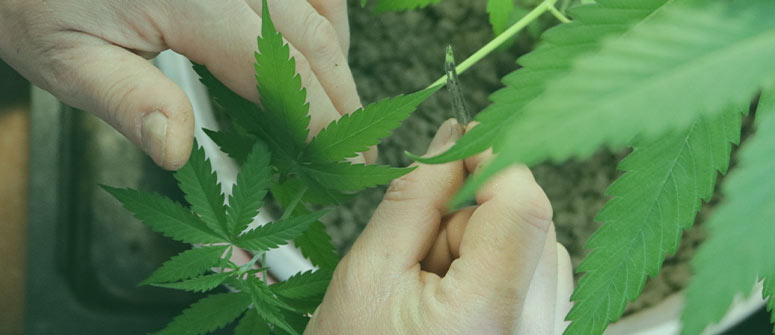
Cons of monster cropping
Of course, nearly all cannabis growing techniques come with some caveats. Consider the following potential cons of monster cropping.
Not a guaranteed success
If you've ever taken clones, you'll know that not all of them survive. If you implement monster cropping, be prepared to lose a few clones; where possible, consider taking more clones than necessary.
Stressing your plants may backfire
The flowering phase of a cannabis plant's life cycle is pretty delicate, and most growers edge as far away from stressing their blooming plants as possible. Overdoing it with stressful training during the flowering phase can greatly stunt your plants and reduce their yields. In some cases, stress during the bloom phase can also trigger hermaphroditism.
Not applicable to autos
If you're growing autoflowers, do not try monster cropping. Since autoflowers can't be manipulated back to the veg stage through changes in their light cycle, taking cuttings from a blooming auto is not worth the stress it causes, to you or your plants.
Time intensive and hands-on
Rooting and caring for clones is a hands-on process. If you're not ready to spend plenty of time in the garden/grow room nursing your clones, do not bother to try monster cropping, as it won't be worth your while.
Longer grow time
Monster cropping inflicts a whole lot of stress on your plants. In order to enjoy increased yields, you'll need to let your plants recover from this intense technique, which will inevitably push back your harvest date. So, how long does it take to monster crop? It depends on the specific strain in question, but you can expect to add two to four weeks onto a standard grow cycle for that strain.
How to monster crop cannabis
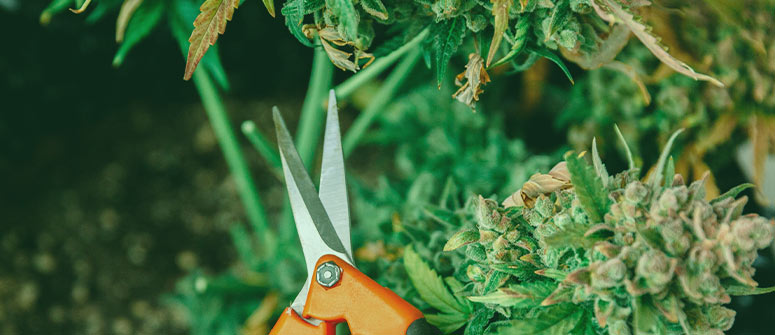
Now that you’re well-acquainted with the upsides and drawbacks of monster cropping, it’s time to review the process itself. Below, we’ll break down all you need to perform this technique, followed by step-by-step instructions.
What you'll need
- A healthy plant to take clones from
- Cloning supplies, such as rooting hormone and a cloning tray filled with peat moss or Rockwool
- Extra growing medium and pots
- Pruning shears or a razor blade
How to monster crop cannabis indoors
If you want to monster crop cannabis indoors, follow these steps:
- Choose a healthy mother plant that is at least two months old and has been in the flowering stage for 2–3 weeks.
- Take clones from the flowering plant. See “How to take cannabis clones properly” below.
- After the clones have rooted, transplant them into the growing medium.
- Re-veg the clones by using grow lights to provide a vegetative light cycle of 18 hours of light and 6 hours of darkness.
- Once the clones have grown new leaves and stems, prune them to encourage bushier growth.
- After 2–4 weeks, transplant the clones into larger pots or your hydroponic system.
- Monitor the plants carefully and adjust nutrients and pH levels as necessary.
- Once your plants have grown to a sufficient size, flip them to bloom using a 12/12 light/dark cycle.
How to monster crop cannabis outdoors
Monster cropping cannabis outdoors is similar to doing so indoors, but there are a few additional considerations to keep in mind:
- Take clones from a plant that is well-suited to thrive in your local climate/environment.
- We advise taking clones when temperatures are slightly cooler, either early in the morning or later in the evening. When taken during the hottest part of the day, clones are more susceptible to heat stress and other issues that can cause them to wilt or even die. Additionally, you’ll also minimise the stress on your flowering mother by taking cuttings from her in the morning or afternoon.
- Protect the clones from harsh weather conditions and pests. If possible, bring your clones indoors and keep them under cool CFL lights or next to a window. Do not expose your clones to direct sunlight, as they may wilt and die.
- Once your clones have taken root, re-veg them using natural sunlight or artificial grow lights.
Tips for successful monster cropping
To monster crop successfully, keep the following tips in mind:
- Choose a healthy mother plant that is in flowering stage.
- Take clones during the second or third week of flowering.
- Re-veg the clones for at least two to four weeks.
- Prune the clones to encourage bushier growth.
- Monitor the plants carefully, and adjust nutrients and pH levels as necessary.
- Be patient and don't rush the process.
How to take cannabis clones properly
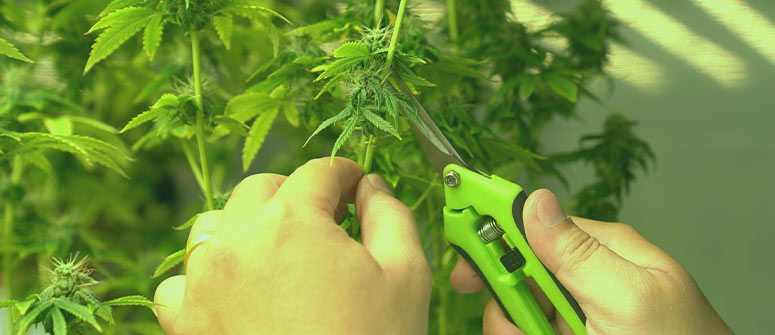
As taking cannabis clones is an extremely important part of the monster cropping process, below we’ve broken down the steps to doing so.
- Choose a mother plant with a strong and sturdy stem, healthy leaves, and a good root system. Avoid plants that are stressed, diseased, or showing signs of nutrient deficiencies. Additionally, it's important to select a strain that responds well to monster cropping, as not all cultivars are suitable for this technique. Experienced growers may have an idea of which strains work well for the job, but for those who are new to the technique, it may be helpful to do some research or consult with a knowledgeable source.
- Sterilise your tools, including your pruning shears and cloning tray, to prevent the spread of disease. Failing to do so can lead to harmful pathogens ravaging your plants, which will end your monster cropping journey before it really starts. Give you plants the best start by ensuring everything is clean.
- To maximise the chances of successful rooting, select a branch that has at least two nodes and is about 10–15cm long.
- Make a clean, diagonal cut about 1cm, or a bit less, below the lowest node. Diagonal cuts create a larger surface area for the clone to absorb water and nutrients, which can increase the chances of successful rooting. Also, diagonal cuts create a more pointed end, which can make it easier to insert the cutting into the growing medium. It is important to make clean cuts to prevent damage to the clone.
- Remove the lower leaves, leaving only the top two or three leaves on the cutting.
- Dip the cutting in rooting hormone and place it in a cloning tray filled with moistened growing medium.
- Cover the cloning tray with a clear plastic dome to create a humid environment.
- Place the cloning tray under grow lights or in a warm, bright location. Cool CFL lights work well for maintaining clones.
- Monitor the clones carefully, and mist them with water as needed to keep them moist.
Taking cannabis clones properly is crucial to ensure that they root and grow into healthy plants. By following the steps above carefully, you can increase your chances of success and create a bushier, more productive cannabis plant through monster cropping.
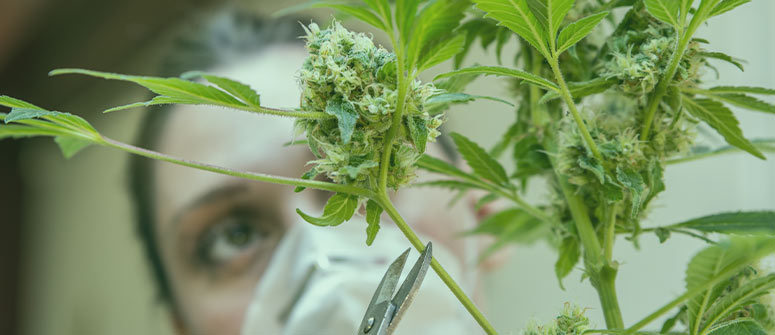
Is monster cropping worth it?
Monster cropping can be a worthwhile training technique for experienced growers who want to increase their yields and efficiency. However, it is a difficult technique that takes some experience and patience to perform properly. Inexperienced growers may find it challenging to get the timing and pruning techniques right. Additionally, some strains may not respond well to monster cropping, so it's important to pick the right plants for this technique.




